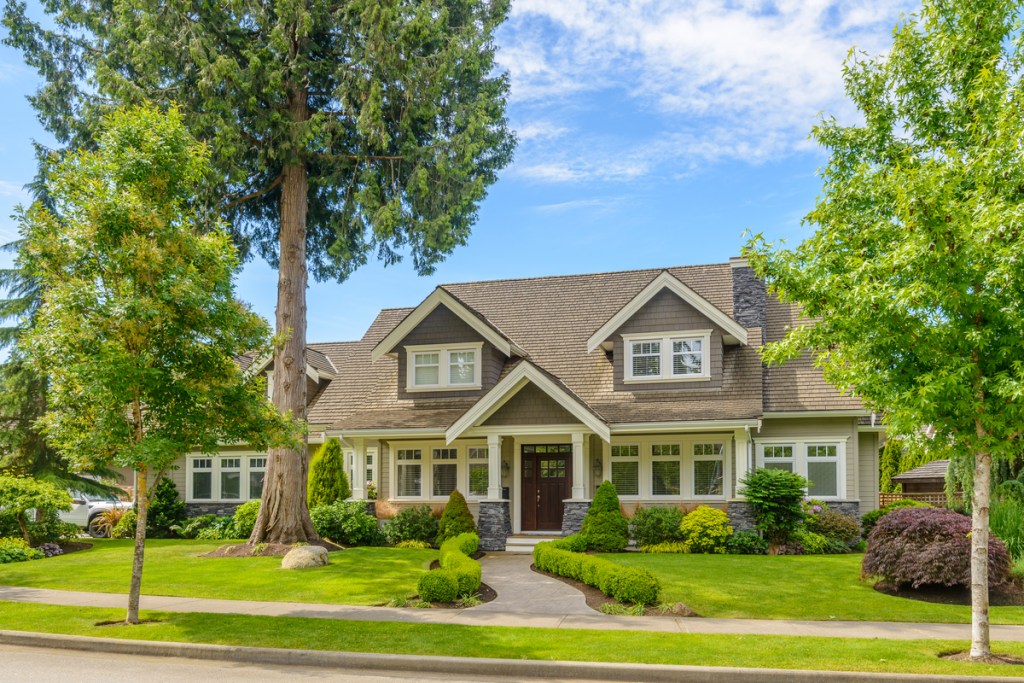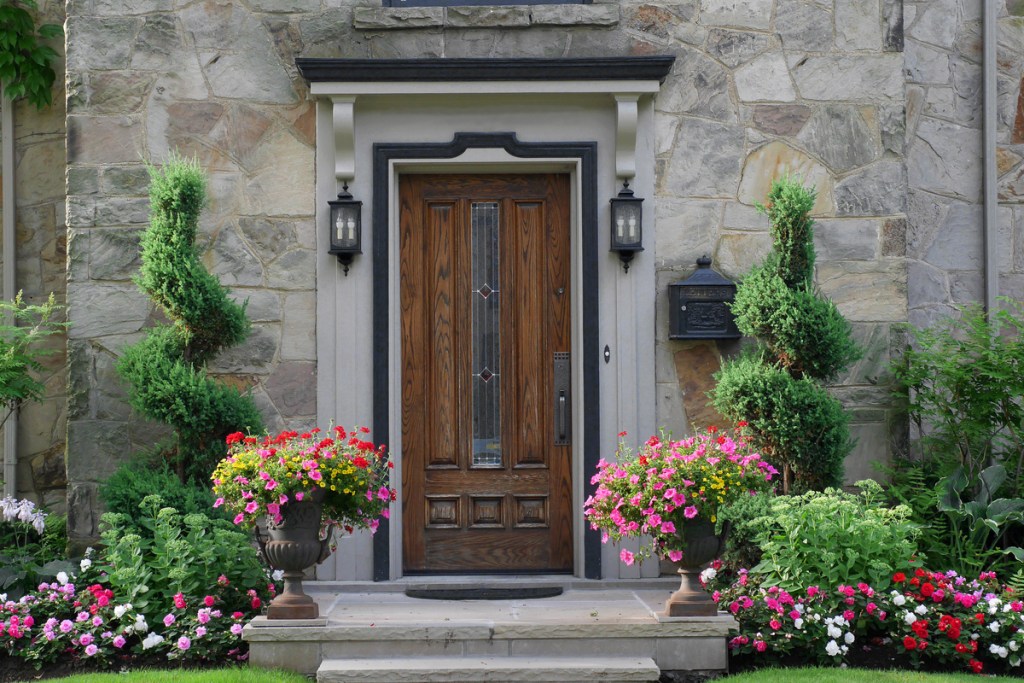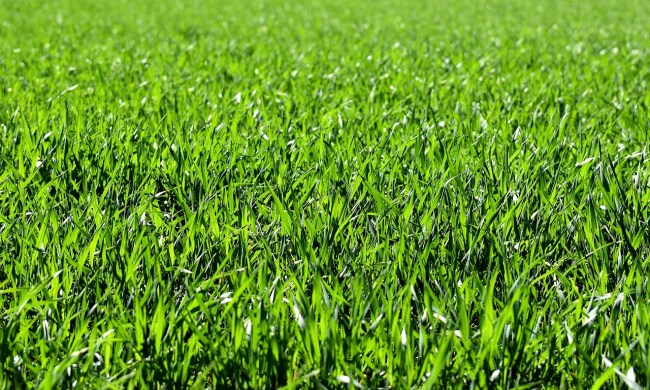
As warm weather comes back to town, most of us are ready to get outside. And if you’ve stayed indoors through a long cold winter or wet spring, your front yard will show it. Overgrown shrubs, tired mulch, and dingy walkways are easy enough to fix, but maybe you’re looking for something more exciting than a simple spring cleanup. Following are six easy summer curb appeal ideas that will boost your home’s appearance without breaking the bank.
Start with a simple reset
Don’t underestimate the power of simplicity. Before adding new elements to your yard, it’s best to start with a clean slate. Remove all dead and dying plants and weeds from landscape beds. Cut back overgrown shrubs. Mow and edge the grass. Pressure wash the house, driveway, and walkways. Inspect siding, concrete, fencing and other built elements to identify necessary repairs. If you already have basic yard tools, this process costs almost nothing.
Go ahead and take care of any routine repairs and maintenance like painting, fertilizing the grass, and adding a fresh layer of mulch to landscape beds. Then, with everything clean and fresh, you’re ready to take a step back and plan for new updates.
Update the mailbox zone
It’s easy to overlook the mailbox and its influence on the rest of the landscape. Visitors use it, or the house numbers on it, to find your home. And it sets the tone for entry into the larger landscape. A rusty box on a rotten post doesn’t make a good first impression. Update your mailbox zone with a new box on a new post, surrounded by fresh new plants. Be sure to include your house number on the new mailbox.
Mailbox landscape design is an opportunity to have fun and develop your own personal style. From the look of the box and post combination to the choice of garden plants, the possibilities are limitless. If it’s been a while since you changed up this part of your yard, it’s probably ready for an update.

Create a welcoming entry area
If your family normally enters through the garage or another door, the main entrance from the street may not be on your radar. But that is the primary view for everyone else who visits or passes by. Create a welcoming entrance with clean and simple shrub plantings, a splash of colorful flowers, and updated lighting.
If the front entry light fixture came with the house when it was built in the 1990s, it may be time for a new look. Check out the local light shop for something with an updated look or the vintage store for a fixture with classic detailing. As for flowers, an in-ground bed is great, but a colorful, well placed container planting (or three) adds even more appeal.
Plant a tree
One tree can change the entire look and feel of the landscape. Large shade trees visually soften the look of the home, cool the intense summer sunshine, and highlight particular views by framing the landscape within their branch structure. Smaller ornamental and flowering trees, like Japanese maples and dogwoods, add focal points, color, and texture to accent and complement other landscape plants.
Tree placement is critical for the survival of the tree and to get the desired effect. Leave at least 20 feet between the tree trunk and the nearest concrete, including the house foundation, driveway, and sidewalk. Also be aware of the tree’s future growth. Avoid planting beneath overhead utility lines and in front of windows where a desired view would be obscured.
Accentuate the home’s architecture
Builder-installed trees and shrubs are notoriously made up of whatever was inexpensive and available at the time, not necessarily what is best for a great-looking landscape. If something just doesn’t look right about your landscaping, it could be time for a minor renovation starting with the foundation plants.
Landscape plants should fit with the design of the house. Remove plants or avoid planting in front of low windows. Plan new plantings based on the available sun exposure and the mature size of the plants. Use tall shrubs, trellised vines, or small ornamental trees to soften stark wall expanses. Plant in layers, with taller plants behind lower ones, alternating coarse and fine leaf textures. Choose plants with foliage colors that show up well and complement the colors of the home’s siding and trim.

Dress up that sidewalk strip
One of the toughest and most visible areas of a yard is the strip between the sidewalk and the curb. The easiest thing to do is plant lawn grass and hope for the best, but that rarely works. Errant feet, bikes, skateboards, dogs, and car tires do their best to compact the soil and kill the grass. Take control of this area once and for all to boost the appearance of your landscape.
If grass will not grow properly, why not remove it? Just be sure your solution complies with local codes and covenants. Cut out the sod, install heavy duty landscape fabric, and spread a four-inch layer of decorative gravel. If you’d prefer greenery to stone, and are willing to water when needed, plant rugged perennials that are better equipped to withstand the heat, drought, compaction, and occasional traffic of the sidewalk strip. Remove the sod, dig in an inch of compost, and plant hardy perennials like asters, black-eyed Susans, Russian sage, sedums, daylilies, and more.



